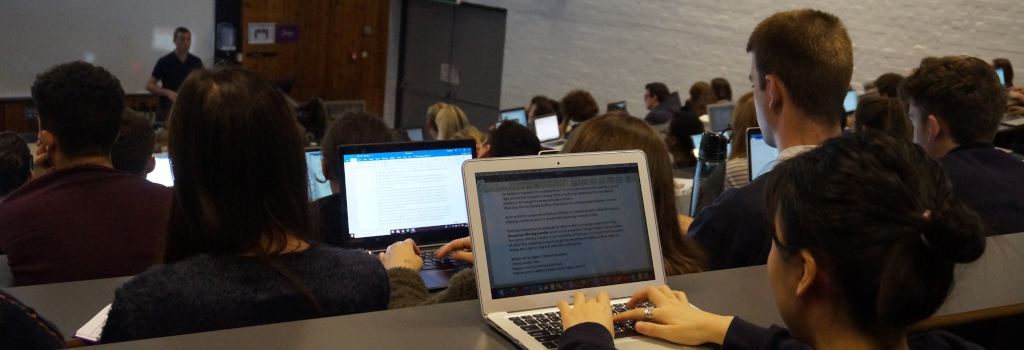Lecture Capture

Lecture capture is the live recording of a class-based teaching event, which is then made accessible to students online. The recording usually consists of screen capture and the lecturer’s voice, but can also include a video feed of the room, where available. Anything the lecturer says and any text presented on screen can be used to search the recording.
The recording can be used by the students for catching up on missed sessions or as complementary to the session they have attended. It can also be used for distance learning.
There is a strong demand for lecture capture. Student expectation, coupled with significant changes to the Disabled Students’ Allowances (DSAs) and the EU Web Accessibility Directive, mean that universities are increasingly adopting lecture capture solutions or repurposing existing provision to help provide inclusive learning environments. UCISA (2018) reports that 75% of responding HEIs now have lecture capture systems. Very few studies have been able to directly correlate lecture capture to a drop in attendance.
Best Practice Tips
- If you have questions concerns about recording your lectures, have a look at the University’s guidance, policies and FAQs (see link below)–these will hopefully answer your questions.
- Talk to students at the start of the year about how you intend to use lecture capture. Are you going to record all of your sessions, some, or none?
- If you decide not to use lecture capture, explain your reasoning to your students. Many students rely on lecture recordings to revisit difficult concepts, fill in gaps in notes and to revise, particularly if they have a disability or English isn’t their first language.
- If you don’t intend to record lectures, students are still able to make audio-only recordings using their own devices but this is likely to be of poor quality and means that a useful device that could be used for learning will be being utilised as a recording device.
- Advise students that lecture capture is a supplementary resource and not a replacement for attending classes.
- Do not worry about changing your lecture style too much. It may be better for the recording to use the visualiser or a tablet rather than a chalk/whiteboard, but apart from this there is no need to compromise the quality of your lecture.
- Encourage students not to write extensive notes during the lecture. It is better for them to utilise this time to engage with the lecture and ask questions. Students should note down key points and, if needed, revisit the recording to fill in any gaps in their notes after the lecture.
- You can use the recording indicator light to pause the recording at any time, e.g. if you’re covering come sensitive materials or a student wants to ask a question but doesn’t want to be recorded.
- Don’t worry about editing the recording after the lecture unless it’s absolutely necessary. Research shows the vast majority of students do not watch the recordings through in their entirety (Nordman et al.). Instead, students target specific parts of the lecture where they need to revisit difficult concepts or fill in gaps in their notes.
- Always use the microphone. Not only will this improve the quality of the audio, but it also feeds into the induction loop for any students with hearing difficulties.
- Repeat any questions asked by students during the lecture so they are picked up on your microphone. This will ensure all students have the benefit of hearing the question when they revisit the recording.
Resources
Durham University Encore guide for teaching staff
Point students towards the online guidance on using Encore. Note that the FAQs include advice on studying with lecture recordings to steer students toward effective practices.
UCISA (2018). 2018 Report on the Technology Enhanced Learning survey
Further Reading
Briggs, L., 2007. “Can classroom capture boost retention rates?” Campus Technology.
Franklin, D.S., Gibson, J.W., Samuel, J.C. et al., 2011. Use of Lecture Recordings in Medical Education. Med.Sci.Educ. 21 (21-28).
Mayer, R (2021) Multimedia learning. Cambridge: Cambridge University Press.
Sarsfield, M & Conway J (2016) “What can we learn from learning analytics? A case study based on an analysis of student use of video recordings.” Paper 1247 presented at ALT-C 2016. Slides available here.
